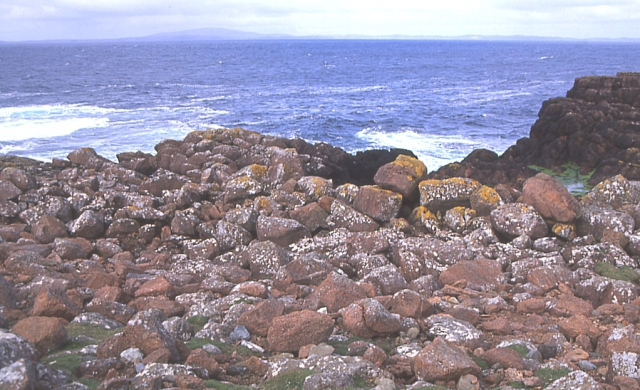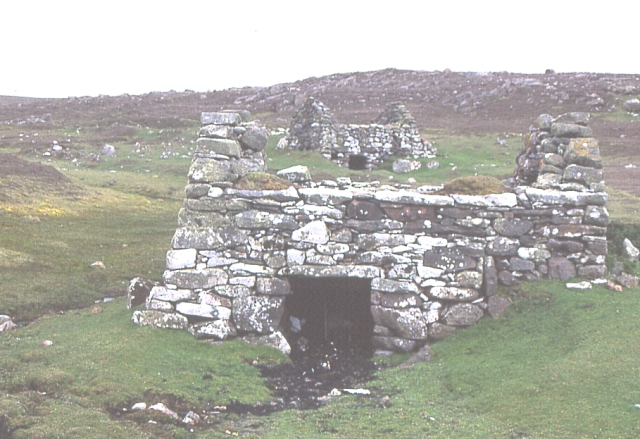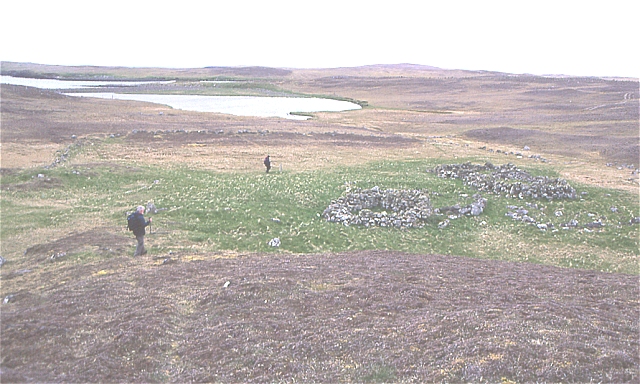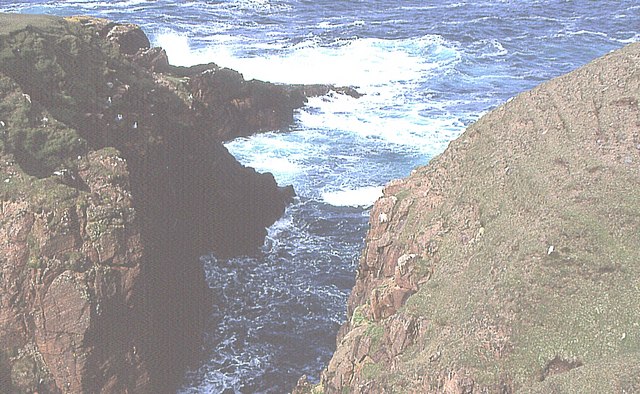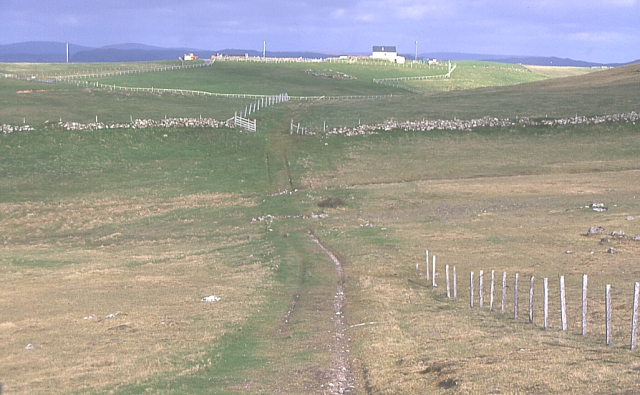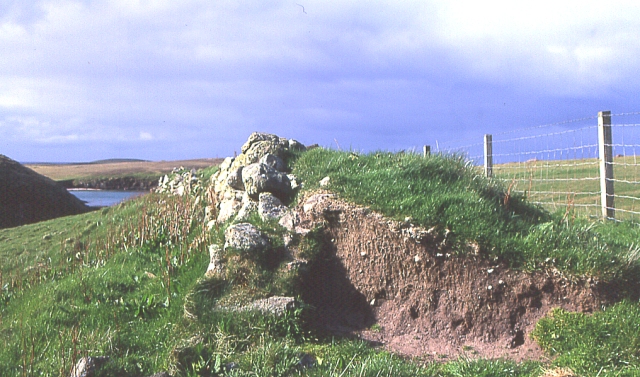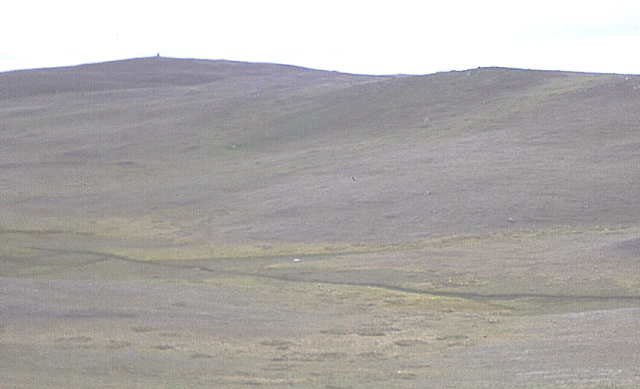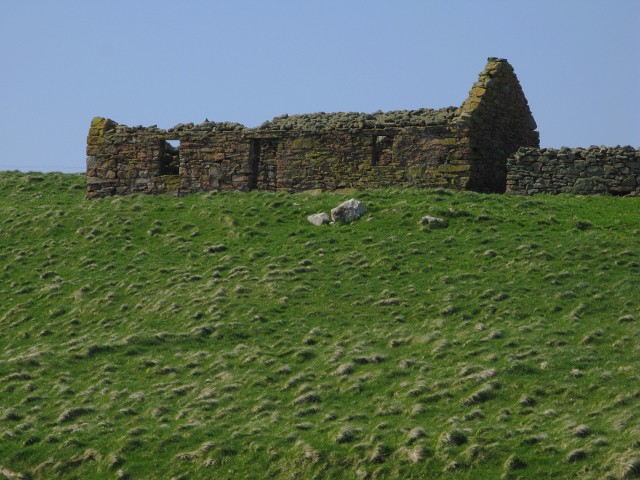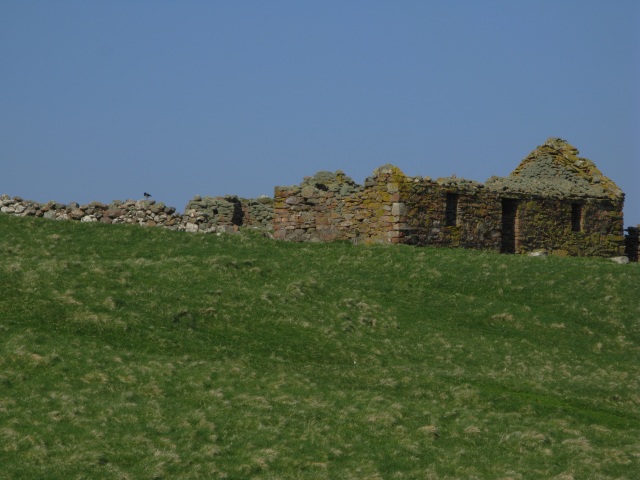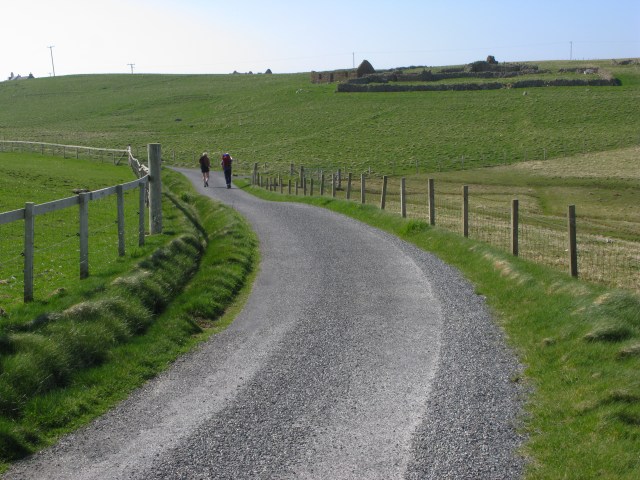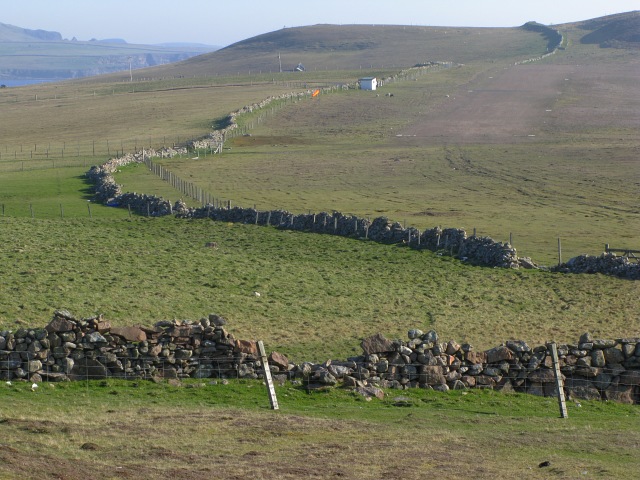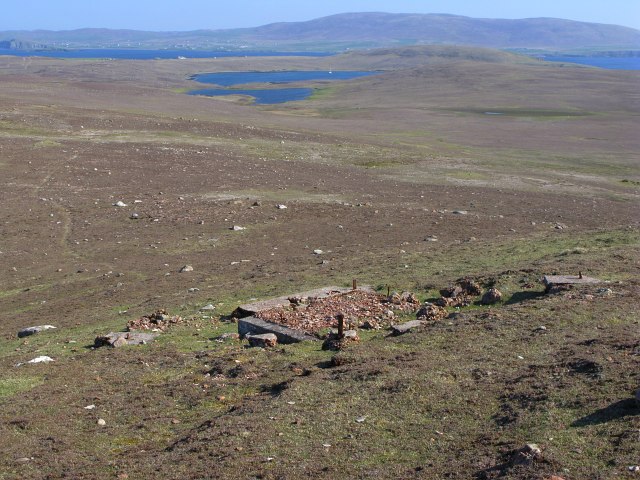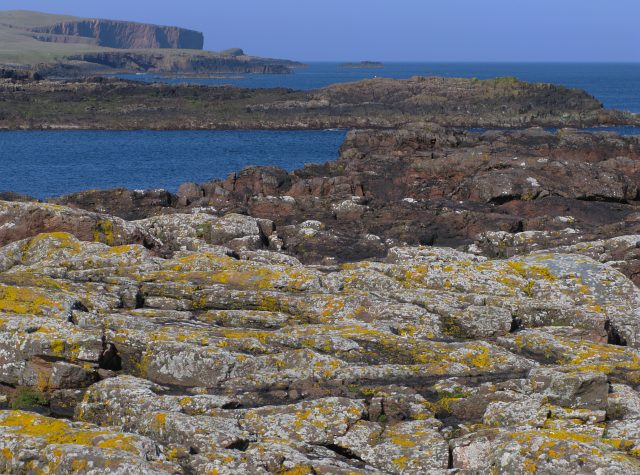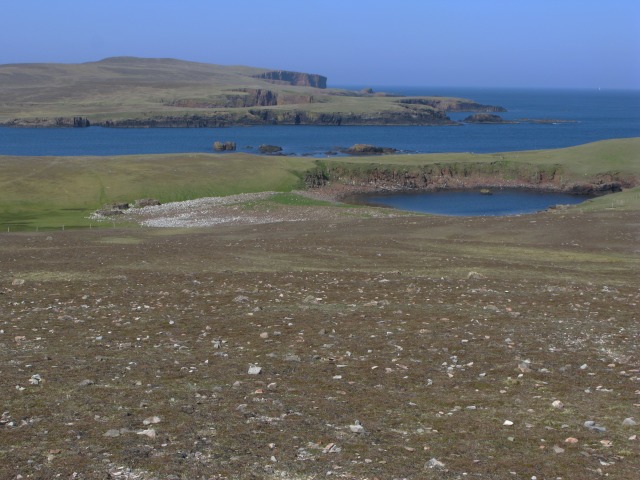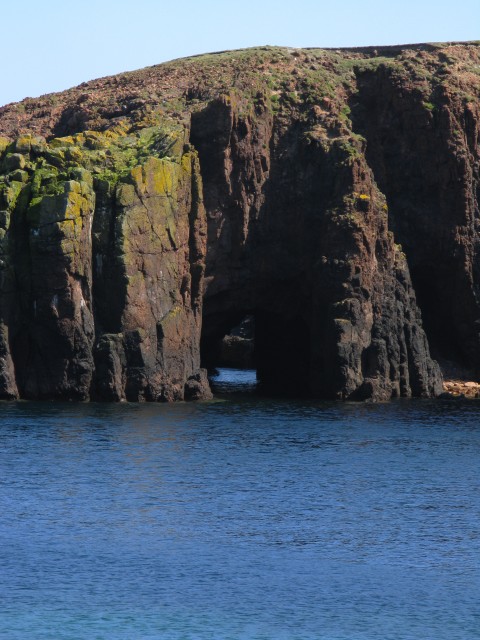Domi Geo
Coastal Feature, Headland, Point in Shetland
Scotland
Domi Geo
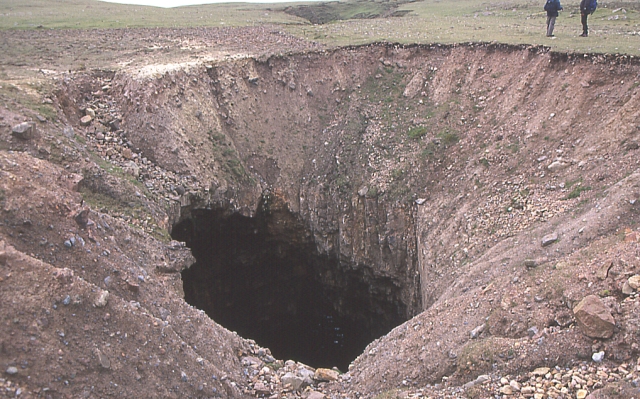
Domi Geo is a prominent coastal feature located in the Shetland Islands, an archipelago in Scotland. It is specifically classified as a headland or point, which is a narrow piece of land that extends into the sea. Domi Geo can be found on the east coast of the Shetland Mainland, near the village of Vidlin.
This coastal feature is characterized by its rugged and rocky terrain, with steep cliffs rising from the sea. The cliffs at Domi Geo are of considerable height and provide breathtaking views of the surrounding coastline and the North Sea. The geology of the area is primarily composed of sedimentary rocks, which have been naturally eroded by the constant battering of the waves over time.
The coastal landscape around Domi Geo is also known for its rich biodiversity. The cliffs provide nesting sites for various seabirds, including puffins, fulmars, and guillemots. Visitors can often witness these birds soaring above the sea or perched on the cliffs, making it a haven for birdwatching enthusiasts.
Domi Geo also offers opportunities for outdoor activities such as hiking and photography. The coastal path running along the headland provides stunning panoramic views and the chance to explore the rugged coastline. However, due to the steep and unstable cliffs, caution is advised when venturing close to the edge.
Overall, Domi Geo is a remarkable coastal feature in the Shetland Islands, offering both natural beauty and a haven for wildlife. It is a must-visit destination for those seeking to experience the rugged and captivating coastline of the region.
If you have any feedback on the listing, please let us know in the comments section below.
Domi Geo Images
Images are sourced within 2km of 60.342667/-1.7024952 or Grid Reference HU1662. Thanks to Geograph Open Source API. All images are credited.
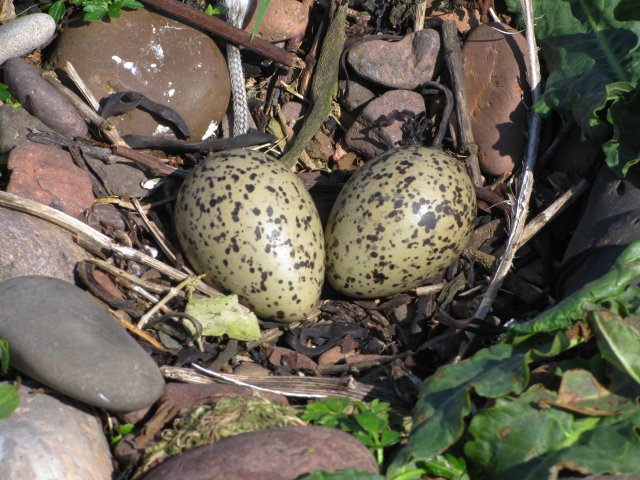
Domi Geo is located at Grid Ref: HU1662 (Lat: 60.342667, Lng: -1.7024952)
Unitary Authority: Shetland Islands
Police Authority: Highlands and Islands
What 3 Words
///settled.soil.covenants. Near Walls, Shetland Islands
Nearby Locations
Related Wikis
Papa Stour
Papa Stour (Scots: Papa Stour) is one of the Shetland Islands in Scotland, with a population of under fifteen people, some of whom immigrated after an...
Biggings
Biggings is a village on the island of Papa Stour, in Shetland, Scotland. Papa Stour's church is situated at the south of Biggings. A homestead of Duke...
Maiden Stack
The Maiden Stack or Frau Stack is a tiny stack in the western Shetland Islands to the north of Brei Holm and east of Housa Voe in Papa Stour. It is so...
Papa Stour Airstrip
Papa Stour Airstrip is a small airstrip in the village of Biggings on the island of Papa Stour. Shetland, Scotland. == History == Papa Stour Airstrip opened...
Have you been to Domi Geo?
Leave your review of Domi Geo below (or comments, questions and feedback).
